
Kód: 18368668
Mathematics of the Modernist Villa
Autor Michael J. Ostwald, Michael J. Dawes
This book presents the first detailed mathematical analysis of the social, cognitive and experiential properties of Modernist domestic architecture. The Modern Movement in architecture, which came to prominence during the first h ... celý popis
- Jazyk:
 Angličtina
Angličtina - Vazba: Pevná
- Počet stran: 420
Nakladatelství: Birkhauser, 2018
- Více informací o knize

Mohlo by se vám také líbit
-

Sacred Web Tarot
792 Kč -
VOCES8 SATB A CAPPELLA SONGBOOK
345 Kč
Darujte tuto knihu ještě dnes
- Objednejte knihu a zvolte Zaslat jako dárek.
- Obratem obdržíte darovací poukaz na knihu, který můžete ihned předat obdarovanému.
- Knihu zašleme na adresu obdarovaného, o nic se nestaráte.
Více informací o knize Mathematics of the Modernist Villa
Nákupem získáte 327 bodů
 Anotace knihy
Anotace knihy
This book presents the first detailed mathematical analysis of the social, cognitive and experiential properties of Modernist domestic architecture. The Modern Movement in architecture, which came to prominence during the first half of the twentieth century, may have been famous for its functional forms and machine-made aesthetic, but it also sought to challenge the way people inhabit, understand and experience space. Ludwig Mies van der Rohe's buildings were not only minimalist and transparent, they were designed to subvert traditional social hierarchies. Frank Lloyd Wright's organic Modernism not only attempted to negotiate a more responsive relationship between nature and architecture, but also shape the way people experience space. Richard Neutra's Californian Modernism is traditionally celebrated for its sleek, geometric forms, but his intention was to use design to support a heightened understanding of context. Glenn Murcutt's pristine pavilions, seemingly the epitome of regional Modernism, actually raise important questions about the socio-spatial structure of architecture. Rather than focussing on form or style in Modernism, this book examines the spatial, social and experiential properties of thirty-seven designs by Wright, Mies, Neutra and Murcutt. The computational and mathematical methods used for this purpose are drawn from space syntax, isovist geometry and graph theory. The specific issues that are examined include: the sensory and emotional appeal of space and form; shifting social and spatial structures in architectural planning; wayfinding and visual understanding; and the relationship between form and program.
 Parametry knihy
Parametry knihy
Zařazení knihy Knihy v angličtině The arts Architecture Theory of architecture
3268 Kč
- Plný název: Mathematics of the Modernist Villa
- Podnázev: Architectural Analysis Using Space Syntax and Isovists
- Autor: Michael J. Ostwald, Michael J. Dawes
- Jazyk:
 Angličtina
Angličtina - Vazba: Pevná
- Počet stran: 420
- EAN: 9783319716459
- ISBN: 331971645X
- ID: 18368668
- Nakladatelství: Birkhauser
- Hmotnost: 870 g
- Rozměry: 161 × 241 × 28 mm
- Datum vydání: 23. April 2018
Oblíbené z jiného soudku
-
Architecture Concept Book
1125 Kč -
Poetics of Space
328 Kč -
The Architecture of Happiness
337 Kč -
Complexity and Contradiction in Architecture
598 Kč -

Architecture of Nature
1083 Kč -
On Weathering
934 Kč -

Non-Referential Architecture
566 Kč -

Architecture for Kids
490 Kč -
Modern Architecture Since 1900
1328 Kč -

Herman Hertzberger - Lessons for Students in Architecture
865 Kč -

Japan-ness in Architecture
667 Kč -

Architecture
371 Kč -
Architecture and Utopia
1251 Kč -

Classic Schwinn Bicycles
443 Kč -

Spatial Agency: Other Ways of Doing Architecture
1498 Kč -
Earth Moves
948 Kč -
Thinking Architecture
923 Kč -

Experiencing Architecture
963 Kč -
Eyes of the Skin - Architecture and the Senses 3e
908 Kč -

Design Process in Architecture
632 Kč -
Extrastatecraft
344 Kč -
Oxford Dictionary of Architecture
382 Kč -
Architectural Theory. Pioneering Texts on Architecture from the Renaissance to Today
721 Kč -
Elements of Modern Architecture
960 Kč -

Kazuo Shinohara
1005 Kč -
Reading Architecture
642 Kč -

Aesthetics of Architecture
934 Kč -
Sports Facilities
1748 Kč -
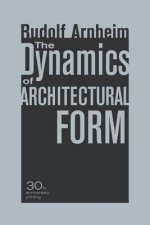
Dynamics of Architectural Form, 30th Anniversary Edition
876 Kč -

Principles of Roman Architecture
1251 Kč -

Artist's Eye
424 Kč -
Buildings Must Die
646 Kč -

Architecture Depends
538 Kč -
Architectural Composition
1858 Kč -

Knowledge Matters
720 Kč -
Modern Architecture: A Very Short Introduction
232 Kč -
Social Logic of Space
1364 Kč -

International Space Station
1942 Kč -
Architectural Atmospheres
713 Kč -
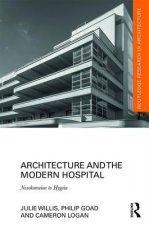
Architecture and the Modern Hospital
4944 Kč -
Introduction to Architectural Theory - 1968 to the Present
1462 Kč -
Analogue Oldnew Architecture
3064 Kč -
Architecture - Drawn
2119 Kč -
Design Thinking
1229 Kč -

UnderstandingUnderstanding
1769 Kč -

Architectural Theory - An Anthology from Vitruvius to 1870 V 1
2455 Kč -
Surface Architecture
1080 Kč -

Louis Kahn
742 Kč -

Autopoiesis of Architecture - A New Framework for Architecture V1
1212 Kč
Osobní odběr Praha, Brno a 12903 dalších
Copyright ©2008-24 nejlevnejsi-knihy.cz Všechna práva vyhrazenaSoukromíCookies



 Vrácení do měsíce
Vrácení do měsíce 571 999 099 (8-15.30h)
571 999 099 (8-15.30h)